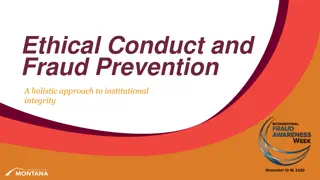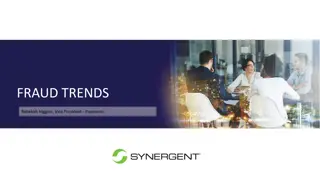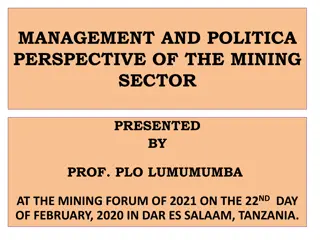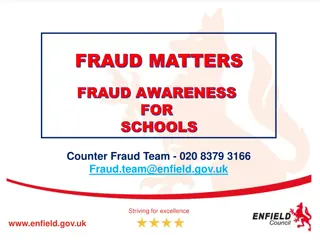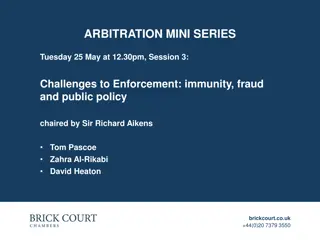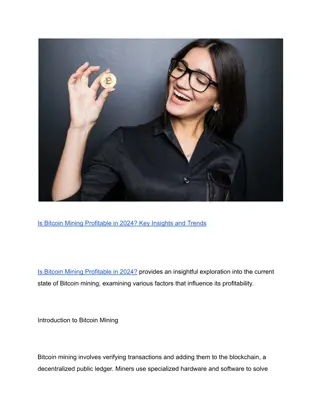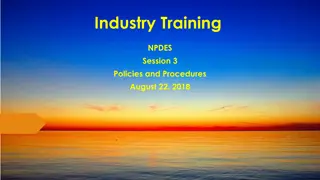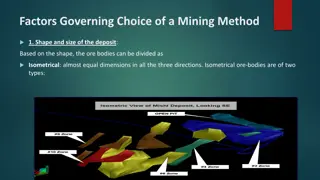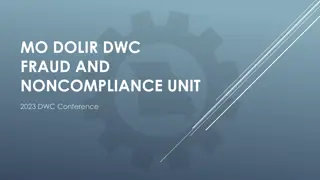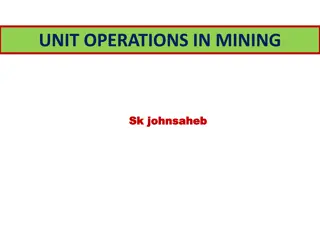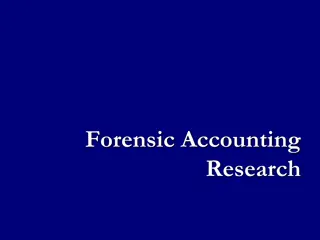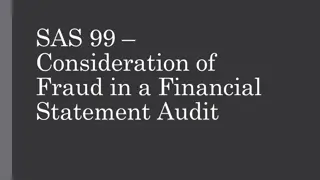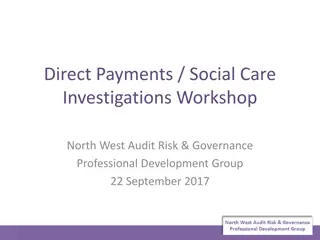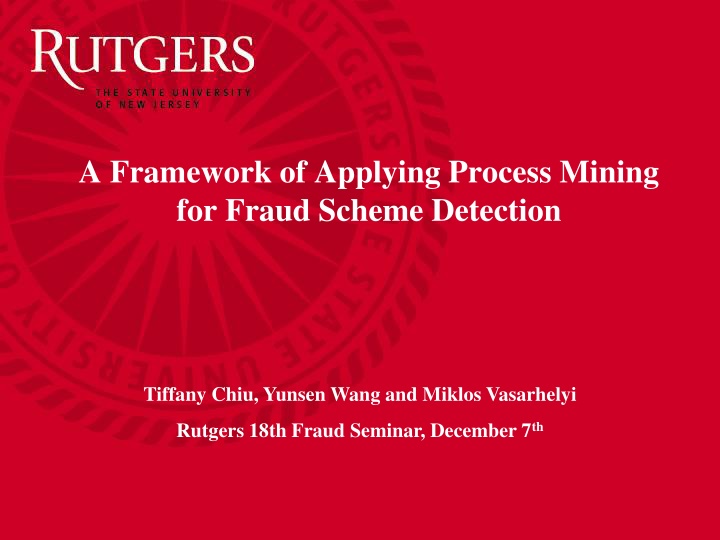
Applying Process Mining for Fraud Scheme Detection
Explore a framework using process mining to detect fraud schemes and assess business process risk. The paper associates activities with fraud schemes to automatically test transaction fraud risk.
Download Presentation

Please find below an Image/Link to download the presentation.
The content on the website is provided AS IS for your information and personal use only. It may not be sold, licensed, or shared on other websites without obtaining consent from the author. If you encounter any issues during the download, it is possible that the publisher has removed the file from their server.
You are allowed to download the files provided on this website for personal or commercial use, subject to the condition that they are used lawfully. All files are the property of their respective owners.
The content on the website is provided AS IS for your information and personal use only. It may not be sold, licensed, or shared on other websites without obtaining consent from the author.
E N D
Presentation Transcript
A Framework of Applying Process Mining for Fraud Scheme Detection Tiffany Chiu, Yunsen Wang and Miklos Vasarhelyi Rutgers 18th Fraud Seminar, December 7th
Introduction This paper aims at providing a framework on how process mining can be applied to identify fraud schemes and assessing the riskiness of business processes. Specifically, the proposed framework captures how the patterns in process mining can be used to detect potentially fraudulent transactions. This paper contributes to the existing literature by associating notable variants/activities with potential fraud schemes and then assigning risk levels, which could be used as an automatic tool to test the fraud risk of every transaction.
Literature Review The idea of mining business processes was first proposed by Agrawal et al. (1998) where they developed an approach to identify business processes occurred in the system by evaluating existing logs. Cook and Wolf (1998) proposed the term - process discovery, and introduced a technique that develops process models by capturing current business processes. A large body of academic research analyzed business processes using event logs and proposed either new types of process mining techniques or a case study to evaluate or improve these techniques. Bozkaya et al. (2009) proposed a process diagnostics method using process mining to help organizations understand three perspectives, namely: how the process model actually looks like, how well does the system perform, and who is involved in the process and how. Rozinat and van der Aalst (2008) proposed a novel conformance checking approach to examine the differences between the observed business process and the designed process model. 3
Literature Review Financial Statements Fraud and Fraud Type Accounting research on financial statement fraud and Accounting and Auditing Enforcement Releases (AAERs) includes testing hypotheses grounded in the literature of earnings management (Summers and Sweeney, 1998; Beneish, 1999; Sharma, 2004) and corporate governance (e.g., Beasley, 1996). Numerous measures for earnings management are created to indicate the risk of financial misstatement and fraud, such as earnings persistence (e.g., Richardson et al., 2005), abnormal accruals and accruals models (e.g., Jones, 1991; Dechow et al., 1995; Dechow and Dichev, 2002; Kothari et al., 2005), and earnings smoothness (e.g., McInnis, 2010). To evaluate the predictive power of the extent accrual-based earnings management measures to detect financial statement fraud, Jones et al. (2008) conducted an empirical analysis comparing ten measures (e.g., discretionary accruals, accrual quality) derived from popular accrual models and found that only the accrual estimation errors (Dechow and Dichev, 2002) and their modifications have the ability to predict fraud and non-fraudulent restatements of earnings. 4
Fraud Types and Fraud Category Total Fraud Sample: 470 fraud firm-year observations (1994-2016) Fraud Types and Fraud Category Fraud Category Frequency Percentage Revenue recognition issues Foreign, related party, affiliated, or subsidiary issues Liabilities, payables, reserves and accrual estimate failures Accounts/loans receivable, investments & cash issues Inventory, vendor and/or cost of sales issues 174 37.02% 150 31.91% 114 24.26% 107 22.77% 107 22.77% 5
Standard Order-to-Cash and Procure-to-Pay Business Processes 6
Applying Process Mining for Corporate Fraud Detection To detect corporate fraud using process mining, it is necessary to understand the standard business process for accounting cycles. Order-to-cash cycle: Order Created -> Goods Issue -> Invoice Created -> Invoice Posted -> Payment Received -> Invoice Cleared Procure-to-pay cycle: Create Purchase Order -> Sign -> Release -> Goods Receipt -> Invoice Receipt -> Payment. Based on the corporate fraud schemes and the activities and variants in the event logs of an ERP system, this study identifies suspicious patterns or activities for each fraud scheme and assigns the risk levels. 7
Mapping Notable Variants into Financial Statement Fraud Categories Refresh Receivables Bill-and-Hold Off-site or Fictitious Inventory 8
Accounting Fraud Schemes and Suspicious Process Patterns Accounting Cycle Non-standard Variant/Activity Order Adjusted: Goods Issue Date Invoice Adjusted Goods Issue Payment Received Order Adjusted: Order Return Invoice Adjusted: Invoice Credit Note Fraud Scheme Suspicion Pattern Example Risk Level Frequent occurrence of order adjusted and/or invoice adjusted activities without approval process during the fiscal year-end period. Altering Documentation Order-to-Cash High Order-to-Cash Bill and Hold Missing goods issue and/or payment received. High Frequent occurrence of order return or invoice credit note immediately after fiscal year end without an approval process. Order-to-Cash Channel Stuffing High Failure to Record Sales Allowances Payment Received Inflating the Value of Inventory Promotional Allowance Manipulation Payment Received Goods Issue Order Adjusted: Change Goods Issue Date Off-site or Fictitious Inventory Order-to-Cash Missing payment received or incomplete payment High Order adjusted without an approval process Putting in improper price comparing to the market value Order Adjusted: Net Price Order-to-Cash High Invoice Adjusted: Cash Discount Many Invoice Adjusted: Cash Discount activities are entered. Order-to-Cash Medium Payment received occurs before goods issue or invoice created. Order-to-Cash Up-Front Fees Low Abnormal goods receipt records: missing goods receipt and/or have duplicate or more than one goods receipt in one purchase order Goods Receipt Procure-to-Pay High High/ Medium/ Low Fraudulent Audit Confirmation All Activities Others Matching trading partners corresponding event logs Refresh Receivables Bribery and Corruption Invoices adjusted occurs for many transactions without an approval process Using resource information in event logs to identify a potential violation of segregation of duty controls Invoice Adjusted Others High All Activities Others Medium
An Example of Detecting Fraud Scheme Using Process Mining Non-standard Variant for Channel Stuffing When auditors perform analytical procedures on a client using process mining, they notice that a large number of process instances have activities Order Adjusted: Order Return and Invoice Adjusted: Invoice Credit Note during January. Then, the auditors perform substantive tests on these sales orders using the event log. If they find a large portion of the returned goods are associated with the sales orders created and processed by the same manager at the end of December, there could be a high risk that this manager has been involved in a channel stuffing fraud scheme.
Conclusion Process mining can be a powerful fraud detection tool when auditors include the potential fraudulent patterns in their fraud detection process. Contribution: (1) this paper proposes a framework that links notable variants/activities in process mining with corresponding fraud schemes. (2) The proposed framework incorporates risk assessment mechanism that indicates the risk level of each fraud scheme and related notable activity. Limitation: this study only includes notable variants/activities in two accounting cycles and several most commonly occurred fraud schemes. Future research could extend the current framework by incorporating more fraud schemes and other accounting cycles when discussing how process mining can be used in fraud detection. 11
Thank you! 12




